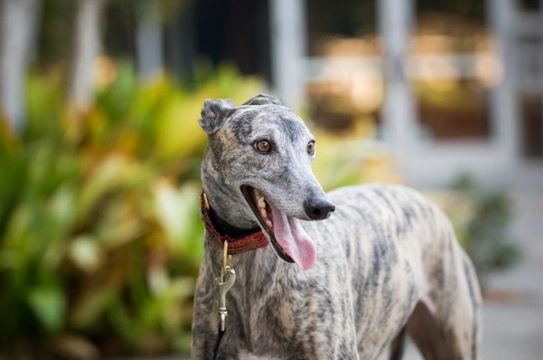
What dog breeds are most commonly diagnosed with arthritis?
Arthritis in dogs is one of the most common canine health conditions, and one that owners of older dogs in particular tend to be quite aware of. Whilst arthritis is not exclusively a condition of old age and can develop in younger dogs too, it is quite uncommon for it to be diagnosed in dogs below the age of around 8-10.
Arthritis treatments aren’t able to cure or reverse the condition, but are instead used to ease symptoms, keep the dog comfortable, and enable them to retain their freedom of movement as far as possible. These treatments or combination of management options are required for the lifetime of the dog too, and so can become quite costly.
Arthritis can affect dogs of any shape or size, breed or type; and it is not just one condition either, but many, each of which present in different ways and cause different types of issues with varying degrees of severity.
This means that knowing if your own dog might develop arthritis, what type, and how severely, is something of a lottery, and one of the many unknowns that dog owners face when they first get their dog.
However, statistics compiled by veterinary organisations and pet insurance companies have revealed the five dog breeds that are most likely to develop arthritis, although the reasons behind this are somewhat less clear. If you own a dog from one of these five breeds or are considering buying one, it is important to find out about their health and the breed’s greatest health risks, in order to ensure that you can accommodate for them – and afford them – if they do occur.
In this article, we will share the five dog breeds most commonly diagnosed with arthritis, in no particular order. Read on to learn more.
Labrador retriever
The Labrador retriever is one of the most popular large dog breeds in the UK, and the 6th most popular dog breed overall. This is an intelligent, personable and highly versatile dog breed that can be used for all manner of working applications as well as making for an excellent family pet.
Labradors are high-energy dogs that need a lot of exercise, but unfortunately, many pet Labradors aren’t kept as fit as they should be, and are often overfed as well. This is a breed that is very food motivated, and that can soon become overweight, which can speed up the onset of arthritis and make it more acute for the dog too.
Rottweiler
The Rottweiler is a very heavy and muscular dog breed that looks very imposing, but that is also one of the smartest dog breeds overall too. Rottweilers are commonly used for guarding roles, and are also excellent pets in the right hands, being obedient, personable, and hugely loyal.
The Rottweiler’s naturally heavy and stocky build means additional pressure on their bones and joints, and when dogs of the breed are overweight too, this adds to the pressure and increases their chances of acute arthritis that can be painful and limiting.
Golden retriever
The golden retriever is another large and relatively hefty dog that tends to see more than its fair share of presentations of arthritis. These are dogs that are both tall and long, and they are quite well rounded too, and it can be hard to spot when dogs of the breed are overweight as a result of this; and due to all of their fur as well!
Because of their large size and the fact that this is another breed that rarely tends to get as much exercise as they really need, coupled with a tendency to eat anything they can find, the golden retriever’s risks of arthritis are somewhat higher than the norm too.
Boxer
The boxer is a large breed dog but one that tends to be lean and very muscular yet not overly heavy in terms of their natural build, although like all dogs, they can and often do carry a few extra pounds!
The boxer has a deep chest and fairly finely built legs, which means that whilst their weights aren’t as high as lots of other breeds of an equivalent sort of height, their limbs are somewhat finer, which can result in a propensity to arthritis in older age.
Greyhound
Finally, the greyhound is another dog breed that is definitely large, but tall and leggy rather than bulky; in fact, few breeds have as acute a difference between height and weight, the greyhound being a dog that is naturally very lean.
It is their very lean, fine legs and also, high running speed that is likely to be the cause for the breed being more likely than most to develop arthritis, particularly in dogs that have been used for racing or that otherwise dog a lot of flat-out running.
Their legs aren’t hugely well padded, and impacts and traumas can speed up the onset and development of arthritis, and even though this is a breed that is light in comparison to their heights, like all dogs, they still carry enough weight to place stress on their bones and joints over a lifetime of wear too.



